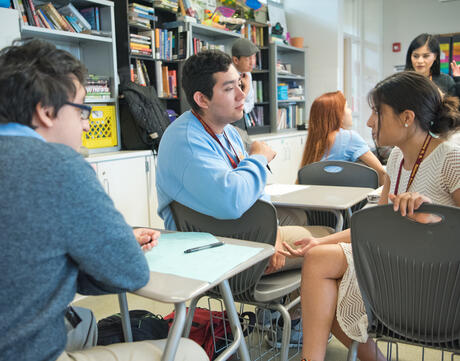
What Is Belonging? | Introductory Lesson
At a Glance
Language
English — USSubject
- English & Language Arts
Grade
6–12Duration
One 50-min class period- Culture & Identity
- Equity & Inclusion
Overview
About This Lesson
As human beings, our need to connect, to find our place within groups and communities, is fundamental. This need for connection, to figure out where and how we belong, takes on special importance during middle and high school. Adolescents are deeply attuned to their peers. They seek respect and belonging in groups where they can be supported, heard, and understood. By surfacing themes of belonging, and the many borders that can shape it, ELA teachers can empower students to explore these concepts through the texts they read, in their interactions with others, in their schools, and in their lives.
Students will begin this lesson by completing an anticipation guide, which offers the opportunity to develop schema and assess initial understandings of belonging. Then, through an analysis of short passages by thought leaders Geoffrey Cohen, the Othering & Belonging Institute, and Brené Brown, students will engage in conversations to challenge preconceptions and develop new insights. Finally, they will reflect on new understandings of how belonging can shape our lives and the world around us.
Preparing to Teach
A Note to Teachers
Before teaching this lesson, please review the following information to help guide your preparation process.
Activities
Activities
Materials and Downloads
Quick Downloads
Download the Files
Download allGet Files Via Google
Additional Resources
Unlimited Access to Learning. More Added Every Month.
Facing History & Ourselves is designed for educators who want to help students explore identity, think critically, grow emotionally, act ethically, and participate in civic life. It’s hard work, so we’ve developed some go-to professional learning opportunities to help you along the way.
Exploring ELA Text Selection with Julia Torres
On-Demand

Working for Justice, Equity and Civic Agency in Our Schools: A Conversation with Clint Smith
On-Demand

Centering Student Voices to Build Community and Agency
On-Demand

















